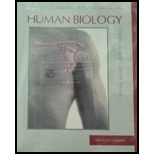
To review:
The consideration of testing the gender of the child before the birth.
Introduction:
When a sperm fertilizes the egg, based on the sex chromosome present in the sperm, there is a 50% chance that the child could be male or female. The gender is determined by the method of amniocentesis where the amniotic fluid is sampled and screened.
A couple if wants to opt for a child with the gender that they want, it is possible to do so with the advent of sperm sorting. Sperm sorting is a technique that is based on the fact of difference of DNA content, as X (female) chromosome carries more DNA than the Y (male) chromosome, and is larger in size also. The use of fluorescent dye helps in sorting of sperm sample as “female-enriched” or “male-enriched”, for the artificial insemination of the mother. Today, it is possible for expecting parents to not only test for the gender of the child but also for any genetic abnormalities that might be present in the child.
Explanation of Solution
The decision of determining the sex before the birth of the child depends on the couple. There are a number of reasons why a couple may opt to know the gender of the child. This could be as simple as doing appropriate preparations.
A lot of people like to set up the nursery or buy things like clothes and toys for a baby before the birth. The preparations that they would like to do might be different depending on if the child was a boy or a girl. Many people would also gift different things for a boy or a girl so that might be another reason to want to know the gender.
Some people would choose not to know the gender because they want to avoid the gender biasness.
Analyzing a completely different perspective where there is female feticide, some countries banned sex determination. Countries like India prohibit determining the gender of a child because of the high incidence of female feticide in some parts of the country.
Advances in technology have now made it possible for people to check for the gender of the child they are expecting. Different perspectives may result in different outcomes upon choosing or not choosing to determine the gender of the unborn child.
Want to see more full solutions like this?
Chapter 16 Solutions
Human Biology: Concepts and Current Issues - With Access (Custom)
- Outline the negative feedback loop that allows us to maintain a healthy water concentration in our blood. You may use diagram if you wisharrow_forwardGive examples of fat soluble and non-fat soluble hormonesarrow_forwardJust click view full document and register so you can see the whole document. how do i access this. following from the previous question; https://www.bartleby.com/questions-and-answers/hi-hi-with-this-unit-assessment-psy4406-tp4-report-assessment-material-case-stydu-ms-alecia-moore.-o/5e09906a-5101-4297-a8f7-49449b0bb5a7. on Google this image comes up and i have signed/ payed for the service and unable to access the full document. are you able to copy and past to this response. please see the screenshot from google page. unfortunality its not allowing me attch the image can you please show me the mathmetic calculation/ workout for the reult sectionarrow_forward
- Skryf n kortkuns van die Egyptians pyramids vertel ñ story. Maximum 500 woordearrow_forward1.)What cross will result in half homozygous dominant offspring and half heterozygous offspring? 2.) What cross will result in all heterozygous offspring?arrow_forward1.Steroids like testosterone and estrogen are nonpolar and large (~18 carbons). Steroids diffuse through membranes without transporters. Compare and contrast the remaining substances and circle the three substances that can diffuse through a membrane the fastest, without a transporter. Put a square around the other substance that can also diffuse through a membrane (1000x slower but also without a transporter). Molecule Steroid H+ CO₂ Glucose (C6H12O6) H₂O Na+ N₂ Size (Small/Big) Big Nonpolar/Polar/ Nonpolar lonizedarrow_forward
- what are the answer from the bookarrow_forwardwhat is lung cancer why plants removes liquid water intead water vapoursarrow_forward*Example 2: Tracing the path of an autosomal dominant trait Trait: Neurofibromatosis Forms of the trait: The dominant form is neurofibromatosis, caused by the production of an abnormal form of the protein neurofibromin. Affected individuals show spots of abnormal skin pigmentation and non-cancerous tumors that can interfere with the nervous system and cause blindness. Some tumors can convert to a cancerous form. i The recessive form is a normal protein - in other words, no neurofibromatosis.moovi A typical pedigree for a family that carries neurofibromatosis is shown below. Note that carriers are not indicated with half-colored shapes in this chart. Use the letter "N" to indicate the dominant neurofibromatosis allele, and the letter "n" for the normal allele. Nn nn nn 2 nn Nn A 3 N-arrow_forward
- Case Studies In Health Information ManagementBiologyISBN:9781337676908Author:SCHNERINGPublisher:Cengage
 Human Biology (MindTap Course List)BiologyISBN:9781305112100Author:Cecie Starr, Beverly McMillanPublisher:Cengage Learning
Human Biology (MindTap Course List)BiologyISBN:9781305112100Author:Cecie Starr, Beverly McMillanPublisher:Cengage Learning  Human Heredity: Principles and Issues (MindTap Co...BiologyISBN:9781305251052Author:Michael CummingsPublisher:Cengage Learning
Human Heredity: Principles and Issues (MindTap Co...BiologyISBN:9781305251052Author:Michael CummingsPublisher:Cengage Learning





